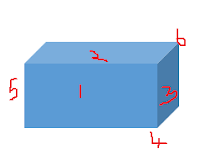1 Fill in the blanks
a) 6 - 1 = _________
Step 1
Check whether its + or -
here its -
Step 2
find the smallest number
here the smallest is 1
leave one finger
Step 3
now lets look for the another number which is 6 here
since its - we have to count back
we left one finger : already we are having 6 - count backwards which is 5
hence 6 - 1 = 5
b) 5 - 4 = ________
Step 1
Check whether its + or -
here its -
Step 2
find the smallest number
here the smallest is 4
lets leave four fingers
Step 3
now lets look for the another number which is 5 here
since its - we have to count back
we left four fingers : already we are having 5 - count backwards
first finger goes with 4
second finger goes with 3
third finger goes with 2
fourth finger goes with 1
hence 5 - 4 = 1
2 Write the subtraction sentences in the boxes provided. Then fill in the blanks.
a) what is the differences between 10 and 6?
Differences which means we have to do subtraction
so the subtraction sentence is 10 - 6 = ____
now lets find 10-6 = ?
Method 1
we can use number tracks to find the differences
first in the number track, mark 10 and 6
now lets check to reach 6 from 10 how many steps we have to move
hence 10 - 6 = 4
Method 2
Step 1
Check whether its + or -
here its -
Step 2
find the smallest number
here the smallest is 6
lets leave six fingers
Step 3
now lets look for the another number which is 10 here
since its - we have to count back
we left four fingers : already we are having 10 - count backwards
first finger goes with 9
second finger goes with 8
third finger goes with 7
fourth finger goes with 6
fifth finger goes with 5
sixth finger goes with 4
hence 10-6 = 4
a) 6 - 1 = _________
Step 1
Check whether its + or -
here its -
Step 2
find the smallest number
here the smallest is 1
leave one finger
Step 3
now lets look for the another number which is 6 here
since its - we have to count back
we left one finger : already we are having 6 - count backwards which is 5
hence 6 - 1 = 5
b) 5 - 4 = ________
Step 1
Check whether its + or -
here its -
Step 2
find the smallest number
here the smallest is 4
lets leave four fingers
Step 3
now lets look for the another number which is 5 here
since its - we have to count back
we left four fingers : already we are having 5 - count backwards
first finger goes with 4
second finger goes with 3
third finger goes with 2
fourth finger goes with 1
hence 5 - 4 = 1
2 Write the subtraction sentences in the boxes provided. Then fill in the blanks.
a) what is the differences between 10 and 6?
Differences which means we have to do subtraction
so the subtraction sentence is 10 - 6 = ____
now lets find 10-6 = ?
Method 1
we can use number tracks to find the differences
first in the number track, mark 10 and 6
now lets check to reach 6 from 10 how many steps we have to move
hence 10 - 6 = 4
Method 2
Step 1
Check whether its + or -
here its -
Step 2
find the smallest number
here the smallest is 6
lets leave six fingers
Step 3
now lets look for the another number which is 10 here
since its - we have to count back
we left four fingers : already we are having 10 - count backwards
first finger goes with 9
second finger goes with 8
third finger goes with 7
fourth finger goes with 6
fifth finger goes with 5
sixth finger goes with 4
hence 10-6 = 4



































